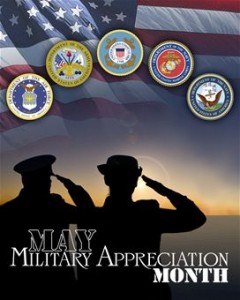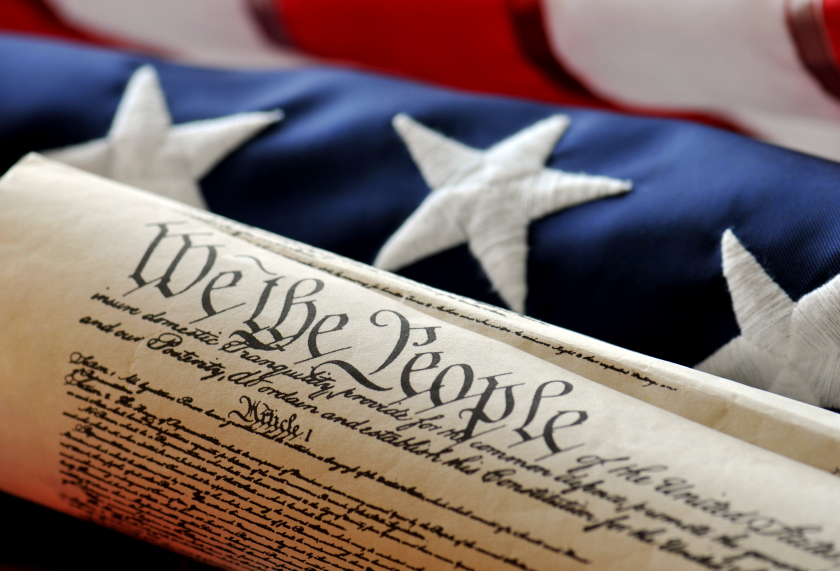
2022 Annual Meeting, Program and Business Meeting
The 2022 Annual Meeting will be held on April 15, 2022 at the Army and Navy Club. The call will be sent late winter of 2022.
Sons and Daughters of the Colonial and Antebellum Bench and Bar 1565 – 1861
Just another WordPress site

2022 Annual Meeting, Program and Business Meeting
The 2022 Annual Meeting will be held on April 15, 2022 at the Army and Navy Club. The call will be sent late winter of 2022.

2021 Annual Meeting, Program and Business Meeting
The 2021 Annual Meeting will be held on April 16, 2021 at the Army and Navy Club. The call will be sent late winter of 2021.
The Annual Meeting of Bench and Bar scheduled for April 16, 2021 is cancelled. It will be held on April 12, 2022.

2020 Annual Meeting, Program and Business Meeting
The Annual Meeting of Bench and Bar scheduled for April 17, 2020 is cancelled. It will be held on April 16, 2021.
 Memorial Day, originally called Decoration Day, is a day of remembrance for those who have died in service of the United States of America. Over two dozen cities and towns claim to be the birthplace of Memorial Day. While Waterloo N.Y. was officially declared the birthplace of Memorial Day by President Lyndon Johnson in May 1966, it’s difficult to prove conclusively the origins of the day.
Memorial Day, originally called Decoration Day, is a day of remembrance for those who have died in service of the United States of America. Over two dozen cities and towns claim to be the birthplace of Memorial Day. While Waterloo N.Y. was officially declared the birthplace of Memorial Day by President Lyndon Johnson in May 1966, it’s difficult to prove conclusively the origins of the day.
Regardless of the exact date or location of its origins, one thing is clear – Memorial Day was borne out of the Civil War and a desire to honor our dead. It was officially proclaimed on 5 May 1868 by General John Logan, national commander of the Grand Army of the Republic, in his General Order No. 11. “The 30th of May, 1868, is designated for the purpose of strewing with flowers, or otherwise decorating the graves of comrades who died in defense of their country during the late rebellion, and whose bodies now lie in almost every city, village and hamlet churchyard in the land,” he proclaimed. The date of Decoration Day, as he called it, was chosen because it wasn’t the anniversary of any particular battle.
On the first Decoration Day, General James Garfield made a speech at Arlington National Cemetery, and 5,000 participants decorated the graves of the 20,000 Union and Confederate soldiers buried there.
The first state to officially recognize the holiday was New York in 1873. By 1890 it was recognized by all of the northern states. The South refused to acknowledge the day, honoring their dead on separate days until after World War I (when the holiday changed from honoring just those who died fighting in the Civil War to honoring Americans who died fighting in any war).
It is now observed in almost every state on the last Monday in May with Congressional passage of the National Holiday Act of 1971 (P.L. 90 – 363). This helped ensure a three day weekend for Federal holidays, though several southern states have an additional separate day for honoring the Confederate war dead: January 19th in Texas; April 26th in Alabama, Florida, Georgia, and Mississippi; May 10th in South Carolina; and June 3rd (Jefferson Davis’ birthday) in Louisiana and Tennessee.

Independence Day of the United States, also referred to as the Fourth of July or July Fourth in the U.S., is a federal holiday commemorating the adoption of the Declaration of Independence on July 4, 1776, by the Continental Congress declaring that the thirteen American colonies regarded themselves as a new nation, the United States of America, and no longer part of the British Empire.
In 1775, people in New England began fighting the British for their independence. On July 2, 1776, the Congress secretly voted for independence from Great Britain. Two days later, on July 4, 1776, the final wording of the Declaration of Independence was approved, and the document was published. The first public reading of the Declaration of Independence was on July 8, 1776. Delegates began to sign the Declaration of Independence on August 2, 1776. In 1870, Independence Day was made an unpaid holiday for federal employees. In 1941, it became a paid holiday for them.
The first description of how Independence Day would be celebrated was in a letter from John Adams to his wife Abigail on July 3, 1776. He described “pomp and parade, with shows, games, sports, guns, bells, bonfires, and illuminations” throughout the United States. However, the term “Independence Day” was not used until 1791.

In the United States, Armed Forces Day is celebrated on the third Saturday in May. It falls near the end of Armed Forces Week, which begins on the second Saturday of May and ends on the third Sunday of May.
On August 31, 1949, Louis Johnson, who was the United States’ Secretary of Defense, announced the creation of an Armed Forces Day to replace separate Army, Navy and Air Force Days. The event stemmed from the armed forces’ unification under one department – the Department of Defense.
According to the U.S. Department of Defense, the day was designed to expand public understanding of what type of job was performed and the role of the military in civilian life and a day for the military to show “state-of-the-art” equipment to Americans. It was also a day to honor and acknowledge Americans in the armed forces.
The first Armed Forces Day was celebrated on Saturday, May 20, 1950. The theme for that day was “Teamed for Defense”, which expressed the unification of all military forces under one government department.
Armed Forces Day was intended to replace the separate Army-, Navy-, Air Force-, Marine Corps- and Coast Guard Days, but the separate days are still observed, especially within the respective services. The Army, Navy and Air Force leagues adopted the newly formed day. The Marine Corps League declined to drop support for Marine Corps Day but supports Armed Forces Day too.

By a Joint Resolution passed on May 20, 1933, Congress declared May 22nd to be National Maritime Day. This is the text of the resolution:
“Whereas on May 22, 1819, the steamship The Savannah set sail from Savannah, Georgia, on the first successful transoceanic voyage under steam propulsion, thus making a material contribution to the advancement of ocean transportation: Therefore be it Resolved by the Senate and House of Representatives of the United States of America in Congress assembled, That May 22 of each year shall hereafter be designated and known as National Maritime Day, and the President is authorized and requested annually to issue a proclamation calling upon the people of the United States to observe such National Maritime Day by displaying the flag at their homes or other suitable places and Government officials to display the flag on all Government buildings on May 22 of each year.”
May 22 is National Maritime Day in the United States each year. This day reflects the gratitude that Americans have for the maritime industry and the benefits it brings to the country. It also recognizes ships and seafarers who have held a special place in the nation’s history.

In the United States, Flag Day is celebrated on June 14. It commemorates the adoption of the flag of the United States, which happened on that day in 1777 by resolution of the Second Continental Congress. The United States Army also celebrates the Army Birthday on this date; Congress adopted “the American continental army” after reaching a consensus position in the Committee of the Whole on June 14, 1775.
In 1916, President Woodrow Wilson issued a proclamation that officially established June 14 as Flag Day; in August 1949, National Flag Day was established by an Act of Congress. Flag Day is not an official federal holiday. Title 36 of the United States Code, Subtitle I, Part A, CHAPTER 1, § 110 is the official statute on Flag Day; however, it is at the President’s discretion to officially proclaim the observance. On June 14, 1937, Pennsylvania became the first U.S. state to celebrate Flag Day as a state holiday, beginning in the town of Rennerdale. New York Statutes designate the second Sunday in June as Flag Day, a state holiday.

In the United States, Patriot Day, observed as the National Day of Service and Remembrance, occurs on September 11 of each year in memory of the 2,977 people killed in the 2001 September 11 attacks.
In the immediate aftermath of the attacks, President George W. Bush, proclaimed Friday September 14, 2001, as a National Day of Prayer and Remembrance for the Victims of the Terrorist Attacks on September 11, 2001.
A bill to make September 11 a national day of mourning was introduced in the U.S. House on October 25, 2001, by Rep. Vito Fossella (R-NY) with 22 co-sponsors, among them eleven Democrats and eleven Republicans. The bill requested that the President designate September 11 of each year as Patriot Day. Joint Resolution 71 passed the House by a vote of 407–0, with 25 members not voting. The bill passed the Senate unanimously on November 30. President Bush signed the resolution into law on December 18 as Pub.L. 107–89. On September 4, 2002, Bush used the authority of the resolution to proclaim September 11, 2002, as the first Patriot Day.
In observance of Pub.L. 111–13, the Edward M. Kennedy Serve America Act, each year since 2009 President Barack Obama has (by presidential proclamation) designated September 11 as Patriot Day and National Day of Service and Remembrance.
Patriot Day is not a federal holiday; schools and businesses remain open in observance of the occasion, although memorial ceremonies for the victims are often held.
Observance:
On this day, it is asked by the President, that the American flag be flown at half-staff at individual American homes, at the White House and on all United States government buildings and establishments at home and abroad. The President has also asked Americans to observe a moment of silence beginning at 8:46 A.M.(Eastern Daylight Time), the time the first plane struck the North Tower of the World Trade Center on September 11, 2001. He also strongly encourages Americans to use the Corporation for National and Community Service to find and volunteer for service opportunities.
Constitution Day 
On Constitution Day and Citizenship Day, an event which falls during Constitution Week, many people in the United States recognize the anniversary of the nation’s constitution and the efforts and responsibilities of all citizens. With regard to the nation’s constitution, in the summer of 1787 delegates convened in Philadelphia to create “a more perfect union” and to craft the country’s constitution. They worked to develop a framework that would provide balance and freedom, taking into account federal and state interests, as well as individual human rights. The delegates signed the Constitution of the United States on September 17 that year. By June 21, 1788, the constitution was effective, having been approved by nine of the 13 states.
With regard to recognizing citizens, newspaper magnate William Randolph Hearst advocated a day to celebrate US Citizenship in 1939. In 1940 the Congress created “I Am an American Day” to be celebrated in the third Sunday in May. On February 29, 1952, President Harry Truman signed into law “Citizenship Day”. It was established to replace I am an American Day. On August 2, 1956, the Congress requested that the president proclaim the week beginning September 17 and ending September 23 of each year as “Constitution Week”. One more change was made to the event when a federal law enacted in December 2004 designated September 17 as “Constitution Day and Citizenship Day”.
When Constitution Day falls on a Saturday, Sunday or on another holiday, the day must be held on a weekday during the preceding or following week. This was the case in 2005, when Constitution Day was generally observed on Friday, September 16, and 2006 when the holiday was observed on Monday, September 18.
Copyright © 2025